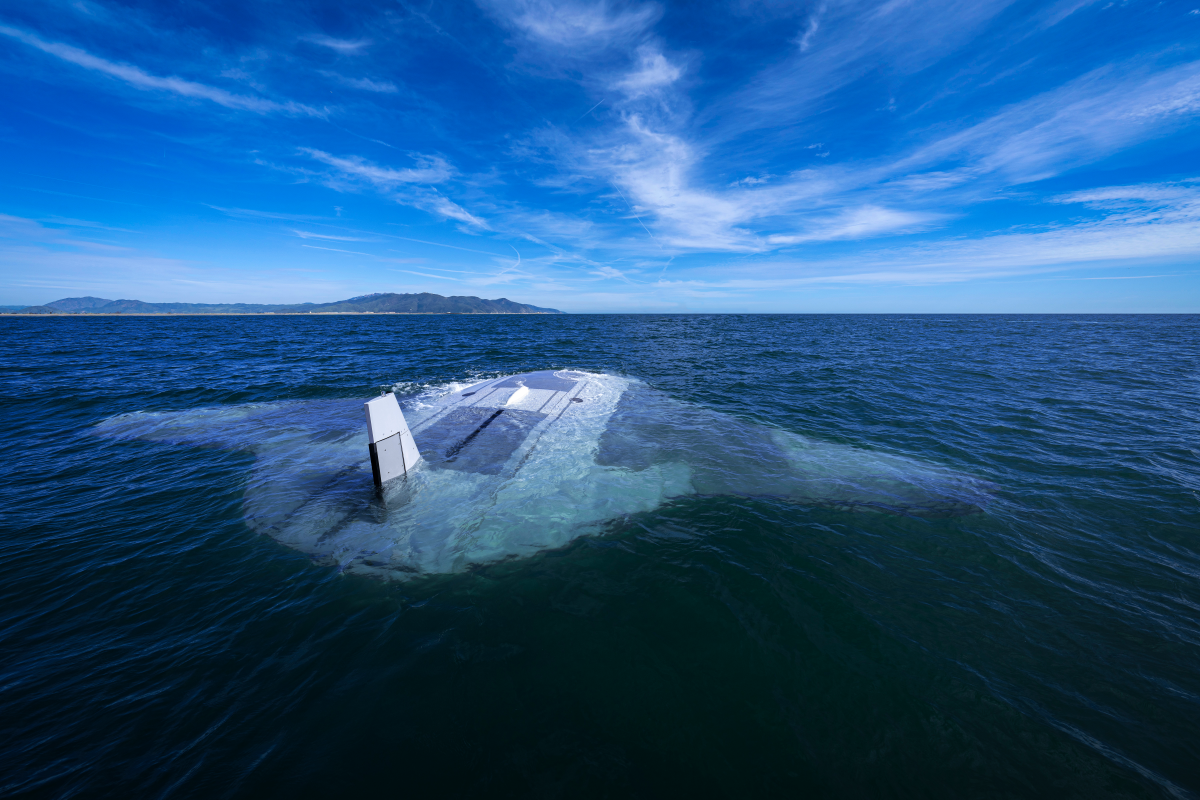
Interesting although speed will not be unusual. now i would like to see a whip thruster developed like the actual Manta Ray.
we do know how to power an oscillator and running a whip should be easy enough.
what makes all this practical is that the environment is naturally uniform. no violent gusts of current.
Early days though.
Video: First look at DARPA's massive Manta Ray drone in action
By David Szondy
June 14, 2024
DARPA's Manta Ray on the surface
Northrop Grumman
https://newatlas.com/military/manta-ray-sub-videos/?
Northrop Grumman has revealed more details on its robotic Manta Ray submersible in some new videos. These include a 4K 360° tour of the first test dive and a rundown on the project with images from never-before-seen angles.
When Northrop Grumman put its Manta Ray prototype to sea earlier this year, it was the culmination of four years of work on DARPA's project to develop an autonomous ExtraLarge Uncrewed Underwater Vehicle (XLUUV) that was capable of carrying out long-range, long-duration missions without human supervision.
This not only required a craft so large that it could only be launched from a pier rather than a ship or a submarine, it also required a new approach that would allow it to cover great distances over many months for very little energy expenditure.
The result was a futuristic glider capable of carrying very large payloads over long distances, using a glider-inspired propulsion system – the Manta Ray changes its buoyancy to rise up through the water, then 'glides' downward, taking advantage of a hydrodynamically optimised hull.
Manta Ray, Making Waves in Autonomy
“A glider has a really intriguing propulsion mechanism, falling forward [with purpose] through the water all the time, both upward and downward,” said Brian Theobald, principal investigator and chief engineer for Manta Ray at Northrop Grumman. “When Manta Ray needs to go up or down, it changes buoyancy by pumping sea water to change the weight of the vehicle.”
The videos include the one embedded below that is a high-resolution VR view of the test dives. Another is more in-depth (sorry for the pun), but you'll have to follow the link here to see it because Northrop Grumman has disabled embed playback.
Manta Ray
The first video above provides us with answers to many of the questions about Manta Ray. Showing it both being moved about on land and skimming through the water, the footage reveals that propulsion is provided by two four-bladed propellers set on the edge of the wings instead of four props as previously thought. It also shows some of the craft's underwater maneuverability and confirms that it can loiter on the sea bottom when necessary to conserve power.
"Manta Ray’s uncrewed capability is critical because we want to keep humans out of harm’s way during long missions in potentially dangerous environments," said Joe Deane, Manta Ray program manager.
<iframe width="800" height="450" src="https://www.youtube.com/embed/o6cDmXFkAdM" title="Manta Ray, Making Waves in Autonomy" frameborder="0" allow="accelerometer; autoplay; clipboard-write; encrypted-media; gyroscope; picture-in-picture; web-share" referrerpolicy="strict-origin-when-cross-origin" allowfullscreen></iframe>
<iframe width="800" height="450" src="https://www.youtube.com/embed/RXkR0K9v5i8" title="Take a 360° Dive with Manta Ray" frameborder="0" allow="accelerometer; autoplay; clipboard-write; encrypted-media; gyroscope; picture-in-picture; web-share" referrerpolicy="strict-origin-when-cross-origin" allowfullscreen></iframe>
No comments:
Post a Comment